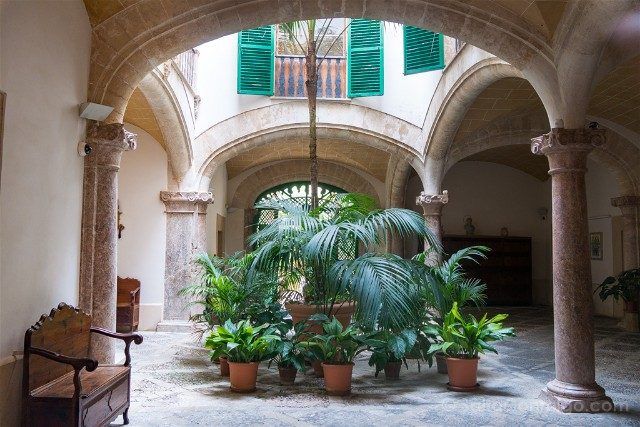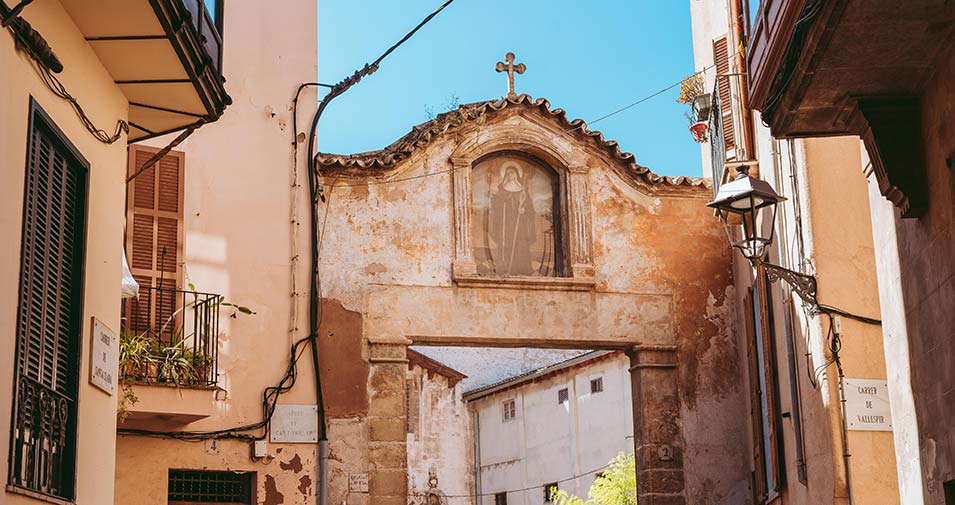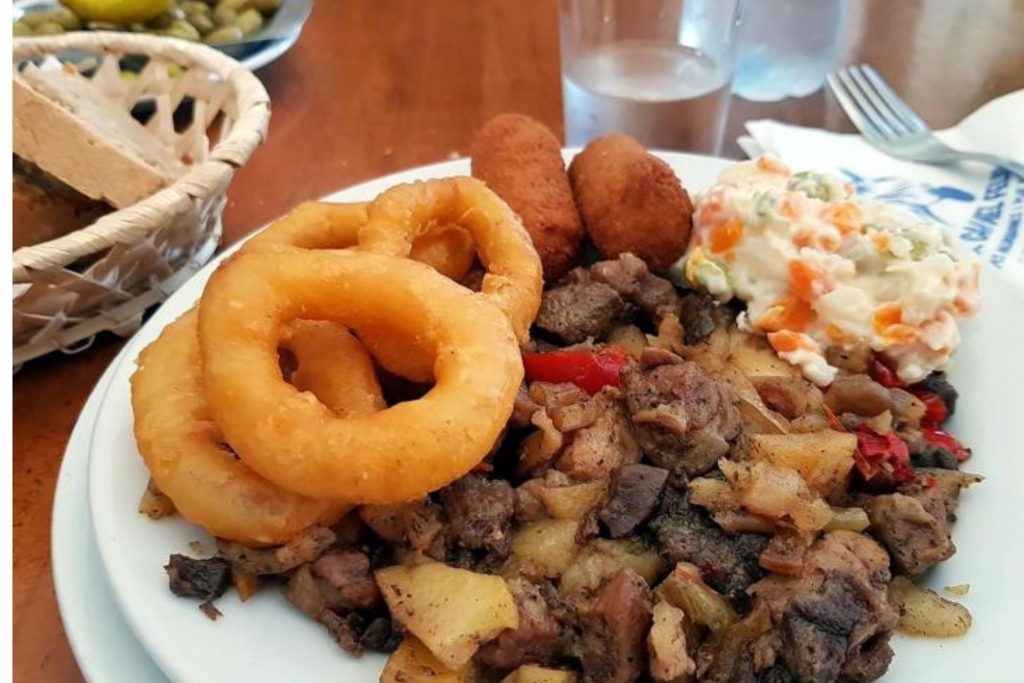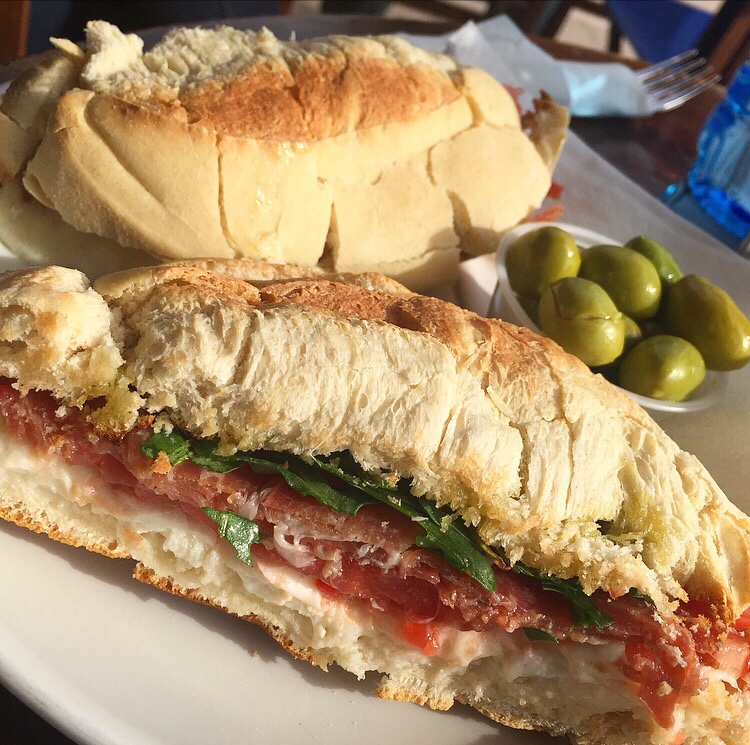In this post, we’ll focus on the more historical and visual aspects that Palma offers to all who visit. Strolls through courtyards, churches, and some of the most iconic buildings in the Balearic capital.
These courtyards give Palma—and the houses that contain them—a unique personality and special charm. Through them, the story of the city is told, from their architecture (some dating as far back as the 14th century and others from the 20th) to what they represented in society at the time.

As semi-public spaces, they were gathering places for notable figures of the era and witnessed political, social, and even romantic events among the people of Palma. Honestly, not much to envy from the (less tragic) stories of the Capulets and Montagues in Italy. So wandering around admiring these architectural beauties is truly priceless.
But Palma isn’t only about courtyards—it’s also home to some of the most beautiful and intriguing churches, such as the Church of San Francisco (Sant Francesc), with its 14th-century medieval cloister, or the Convent of Santa Clara, located at Calle de Can Fonollar, 2. This convent was founded in 1256 by nuns from the Franciscan Order of Saint Clare who came from Girona.

One of the most interesting facts—and something that’s still part of Palma’s living culture today—is that local brides traditionally bring eggs to the nuns as an offering, hoping for good weather on their wedding day. This centuries-old custom seems to work, as hundreds of couples continue to place their hopes in the sisters each year. But what do the nuns do with all these “offerings”? They make sweets, which they sell to visitors and anyone who comes by the convent. It’s a beautiful way to keep the tradition alive and share the work these women have carried out for centuries with both locals and tourists.
Another one of the city’s most iconic buildings—if not the most—is the cathedral, known as La Seu.

And now, as it should be, here’s a quick history lesson to give you more context about this gem: The construction of the Cathedral of Mallorca began in the 13th century and was completed in the 1630s. The cathedral belongs to the Mediterranean Gothic tradition, but over the centuries, it has incorporated cultural elements from both the modern and contemporary periods.
The history of the cathedral is closely tied to the local monarchy. After the conquest of Madina Mayurqa (as Mallorca was then known) in 1229, King James I of Aragon and Count of Barcelona ordered that the old Great Mosque be consecrated to the Virgin Mary as a place of Christian worship. He also ordered the construction of a new church from the ground up, in the style of that era, using part of the former mosque’s space.
After your visit to La Seu—and of course taking some photos from the viewpoint with the Mediterranean as your backdrop—we recommend strolling through the nearby gardens and wandering down Passeig del Born. There, you’ll find some of the city’s most luxurious shops, fascinating architectural facades, and locals enjoying a relaxed walk.
At this point, it’s time to recharge and take a well-deserved break. Our recommendation: Bar Bosch, where you can enjoy a “variat” (a mixed plate of tapas)

or a delicious llonguet (a sandwich made with traditional Mallorcan bread that takes it to another level). Our top fillings? Sobrasada, cheese, or camaiot. Flavors that will blow your mind!

#YUMMY #YUMMY





